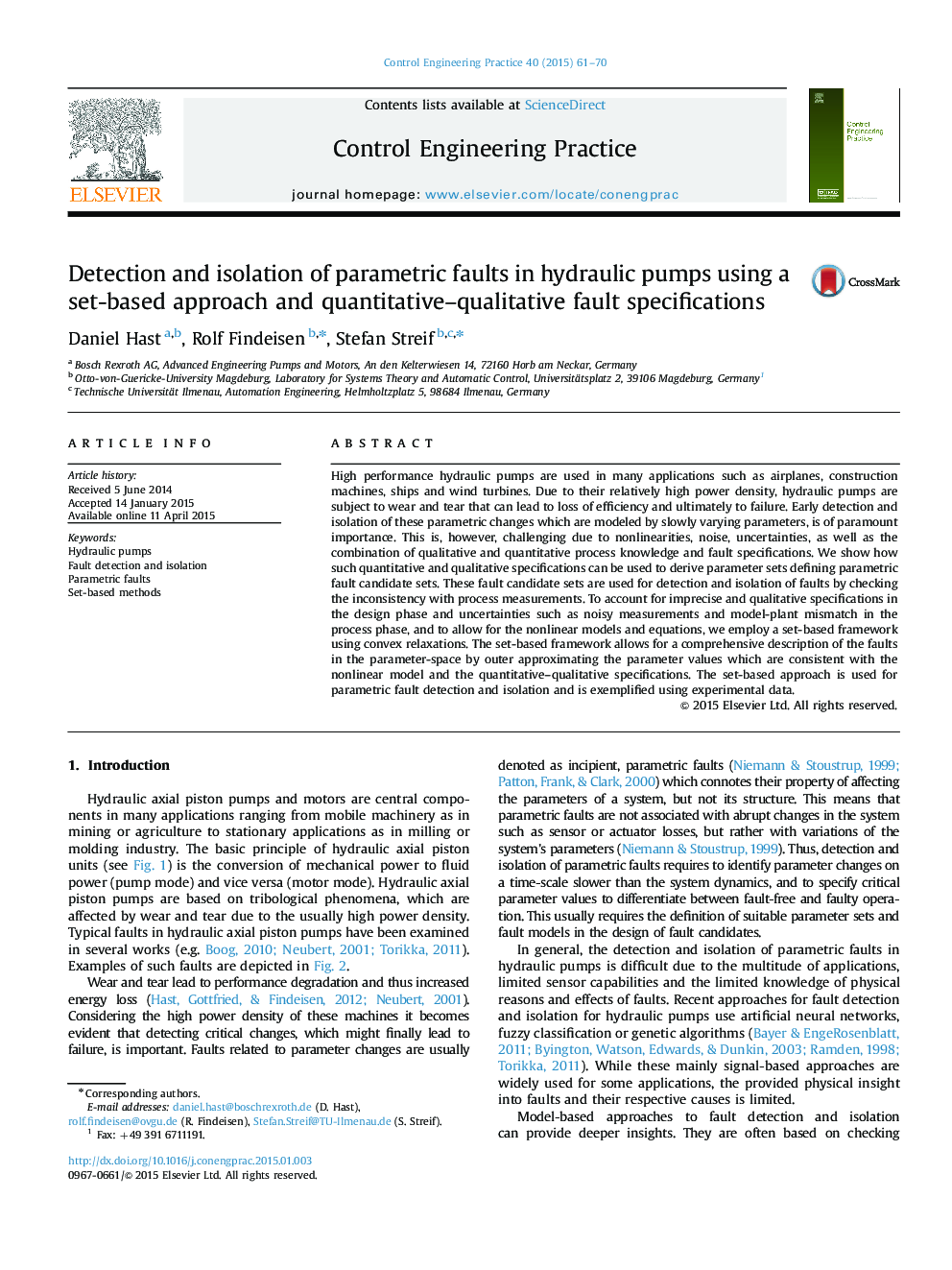| Article ID | Journal | Published Year | Pages | File Type |
|---|---|---|---|---|
| 699492 | Control Engineering Practice | 2015 | 10 Pages |
•Outlined set-based fault detection and isolation approach for hydraulic pumps.•Set-based approach facilitates guaranteed statements besides nonlinear models and uncertain data.•Fault candidates are specified based on qualitative performance specifications.•Practical applicability validated in experiments and simulations.
High performance hydraulic pumps are used in many applications such as airplanes, construction machines, ships and wind turbines. Due to their relatively high power density, hydraulic pumps are subject to wear and tear that can lead to loss of efficiency and ultimately to failure. Early detection and isolation of these parametric changes which are modeled by slowly varying parameters, is of paramount importance. This is, however, challenging due to nonlinearities, noise, uncertainties, as well as the combination of qualitative and quantitative process knowledge and fault specifications. We show how such quantitative and qualitative specifications can be used to derive parameter sets defining parametric fault candidate sets. These fault candidate sets are used for detection and isolation of faults by checking the inconsistency with process measurements. To account for imprecise and qualitative specifications in the design phase and uncertainties such as noisy measurements and model-plant mismatch in the process phase, and to allow for the nonlinear models and equations, we employ a set-based framework using convex relaxations. The set-based framework allows for a comprehensive description of the faults in the parameter-space by outer approximating the parameter values which are consistent with the nonlinear model and the quantitative–qualitative specifications. The set-based approach is used for parametric fault detection and isolation and is exemplified using experimental data.
Graphical abstractFigure optionsDownload full-size imageDownload as PowerPoint slide
